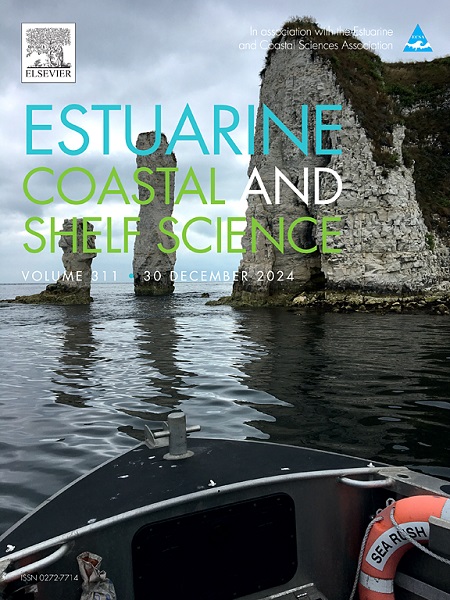Simulating Vibrio vulnificus in the Ala Wai Canal using a coupled microbial-hydrodynamic numerical model
IF 2.6
3区 地球科学
Q1 MARINE & FRESHWATER BIOLOGY
引用次数: 0
Abstract
Vibrio vulnificus is an opportunistic pathogenic bacterium that thrives in warm marine and estuarine environments and poses a health risk to humans through ingestion or wound infection. Previous work on predicting V. vulnificus concentrations has focused on developing statistical models based on observational data of V. vulnificus concentrations and environmental conditions. Those models rely on correlation, therefore are not easily extrapolated and do not represent the underlying coupled biological and hydrodynamic processes. We developed a mechanistic population model of V. vulnificus, based on laboratory measured growth rates in varying temperature and salinity, and coupled it to a 3-dimensional numerical hydrodynamic model (ROMS) of the south Oahu region. The full coupled microbial-hydrodynamic model is evaluated and analyzed for a three-month period during spring 2017 in the Ala Wai Canal of Waikı̄kı̄, Hawai‘i. Simulated V. vulnificus dynamics show that advection is the dominant driver in concentration changes, but in situ growth rates are important, particularly during precipitation events. We find that moderate, prolonged precipitation events provide optimal conditions for elevated V. vulnificus concentrations. These results are consistent with field observations and prior studies, suggesting predictive skill and a step towards V. vulnificus hazard forecasting. We expect that this mechanistic approach should be more portable than statistical models to simulating V. vulnificus in new geographic regions and could even be adapted to other pathogens with appropriate parameterization of the growth model.
求助全文
约1分钟内获得全文
求助全文
来源期刊
CiteScore
5.60
自引率
7.10%
发文量
374
审稿时长
9 months
期刊介绍:
Estuarine, Coastal and Shelf Science is an international multidisciplinary journal devoted to the analysis of saline water phenomena ranging from the outer edge of the continental shelf to the upper limits of the tidal zone. The journal provides a unique forum, unifying the multidisciplinary approaches to the study of the oceanography of estuaries, coastal zones, and continental shelf seas. It features original research papers, review papers and short communications treating such disciplines as zoology, botany, geology, sedimentology, physical oceanography.

 求助内容:
求助内容: 应助结果提醒方式:
应助结果提醒方式:


